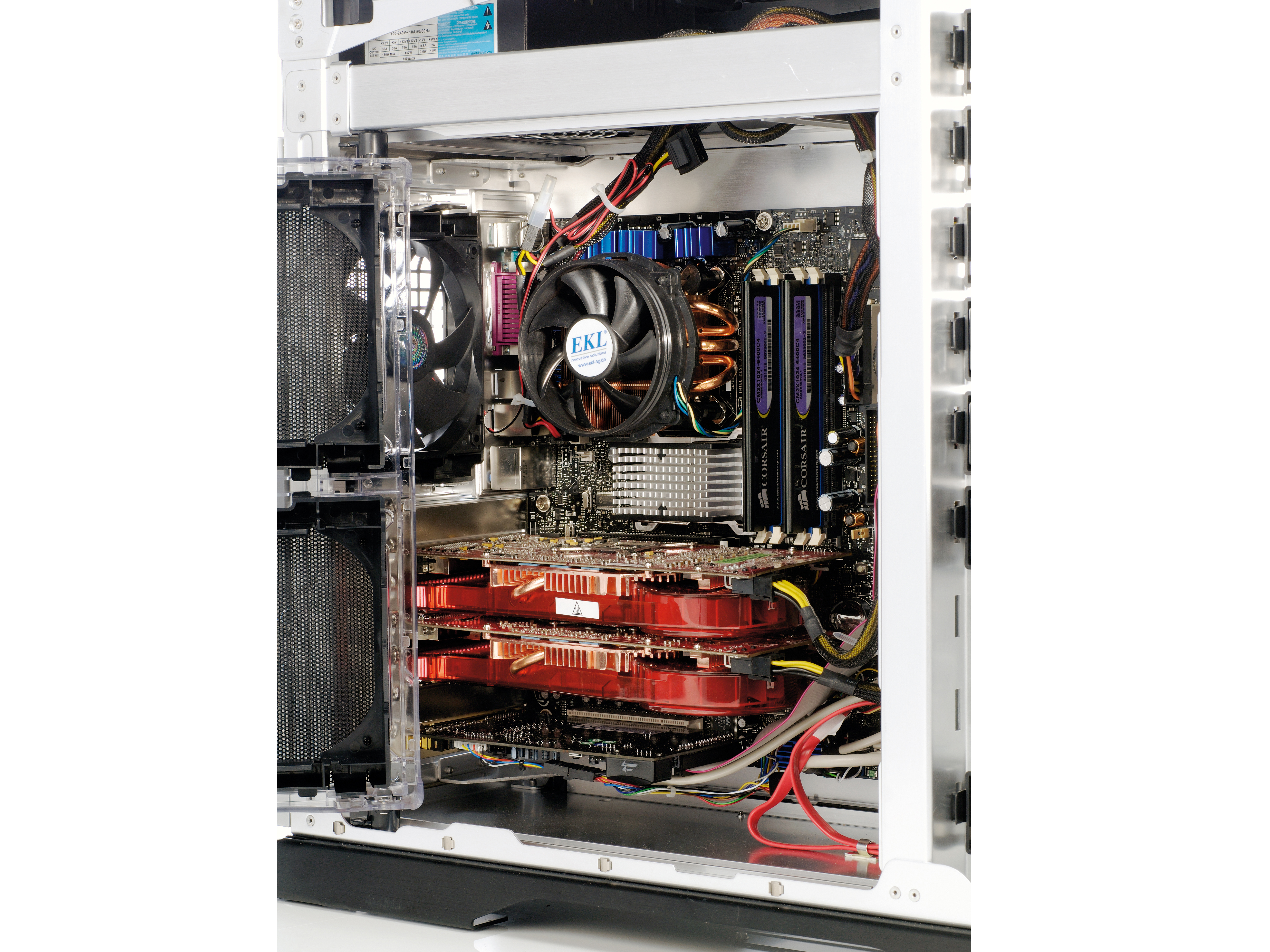TechRadar Verdict
Doesn't make any compromises when it comes to performance... or price
Pros
- +
The latest in processing technology
Cons
- -
An awfully high price to pay for it
Why you can trust TechRadar
As if to prove that quad-core isn't just a paper launch, Evesham has built a cutting-edge performance system around it. The Solar Quattro 67 takes Intel's latest processor and marries it to a fast graphics card, large screen and an array of quality, named components that you would expect in a flagship machine.
Obviously such kit doesn't come cheap, and £3,000 certainly isn't that, but is it worth splashing out this much money?
There's only one quad-core chip available at the moment, and that's the QX6700, so it's no surprise that this is what can be found at the centre of this system. We've discussed the technical merits of this chip over the previous pages, but as a quick overview: quad-core is two Core 2 Duo chips in one package.
This means you get 8MB of L2 cache for your money, it runs on a 1,066MHz FSB and operates at 2.67GHz. It's not the fastest processor from Intel by clock speed alone, but it potentially out-performs the last generation of chips by a factor of two.
This machine is more than just a processor, though. Evesham has plugged a pair of 1GB PC6400 memory sticks into the Intel 975X motherboard to ensure there's enough memory available for most normal tasks.
Anyone eyeing this up as the basis for a workstation may want to increase this further, but with two slots free, upping the system memory to 4GB shouldn't be a problem. The 500GB hard drive from Western Digital also provides enough space for normal use, with plenty of room to add other devices as you see fit.
The general build quality is up to the standard we would expect from Evesham, with well-routed cables, and plenty of room around the components. Evesham has listened to criticisms of its case design, and has rolled out a new chassis for this quad-core machine that actually looks like it contains cutting-edge equipment as opposed to budget components.
Non-enthusiasts may find the blue glow annoying, but the liberal amount of fan grills - all with filters - is definitely welcome. The machine is surprisingly quiet in operation, despite its contents, so don't assume that it's going to be deafening.
Performance figures
Applications are going to take time to recode for multiple-core processors - it's certainly a 'when' rather than an 'if ', but that 'when' is going to take time before we start seeing the kind of programming needed to really take advantage of the latest chips (dualcore as well as multicore).
This is evident in the benchmark results we witnessed for this system. While there is processor and graphics power to spare here, the results are not the fastest we've ever seen.
The SYSmark 2004 score of 334 is definitely a strong result, but it's 30 points behind that garnered from a similarly specified Core 2 Extreme X6800.
This can be ostensibly put down to the faster clock speed of that chip - 2.93GHz as opposed to 2.67GHz, but more importantly it shows that Quad power Evesham's Solar Quattro 67 doesn't make any compromises when it comes to performance even multi-tasking benchmarks fail to show the benefit of quad-core at the moment.
In real world use, being able to do more should relate to the more you get from the multiple cores, but as far as applications are concerned, we're definitely waiting to see what the future brings.
Evesham has employed a pair of X1950XTs in tandem to produce a new high score in 3DMark06 of 11,384. Importantly this engine is more than capable of driving the lovely 22in Iiyama screen at the highest settings. In testing, all the games we threw at this configuration were silky smooth, although with the advent of DirectX 10 cards around the corner, it does undermine the future potential of this machine.
Quad-core, and any machine built around it, is ahead of its time. This means that any purchase needs to focus on the machine's potential, rather than current day performance.
Even so, this system certainly packs an impressive punch, and while it's difficult to guess what it will offer in the future, it ticks all the obvious boxes. If you need multiple core performance now, buy this, otherwise a standard Core 2 Duo system should be more than capable. Alan Dexter
